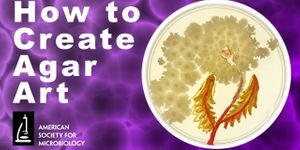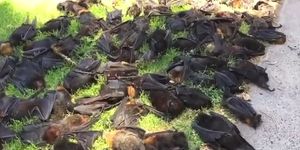Investigating the Physics of Biological Cells to Create new Materials
A special biological property that is not well known or understood seems to enable cellular structures to store energy at their surfaces and outer edges; this characteristic could be the key to engineering a totally new kind of material. That material could, theoretically have many applications. Reporting their findings in Nature Communications, researchers at New Jersey Institute of Technology (NJIT) and Yeshiva University have identified a new class of materials with this property.
"Remarkably, we believe these properties may be present in many materials composed of dimers, a chemical structure in which two similar masses are linked to one another through a rigid, nearly unstretchable bond. Dimers make up the building blocks of many cellular components and so it appears that storing energy in this way is a strategy that a variety of cells use on a daily basis in many living organisms," explained one author of the work, Camelia Prodan, an Associate Professor of Physics at NJIT. "This research could be used to explain cell behavior that is not yet fully understood," she added.
Prodan works along with Emil Prodan, professor of physics at Yeshiva University on a project investigating the how topological phonon edges are related to microtubules, dynamic structures that aid in cell movement, transport and division. The term phonon edges refers to sound or vibrational quanta - small bits of energy - that remain at the edge or on the surface of some material. The investigators are especially focused on the manner in which microtubules store energy at their edges, keeping that quanta restricted from the lengths of their cylindrical forms. Majorana edge modes are like one kind of subatomic particle - Majorana fermions - which appear in various kinds of superconductors. There are vibrations of energy that appear at the edges of materials, an they are not disrupted when the form breaks apart or due to outside influence. The researchers aim to study how to create new material with unique physical properties based on these topological phonon edge modes.
Camelia Prodan can summarize the impact of their findings with less technical language. "Ultimately, we would like to create materials that mimic this property - the ability to restrict energy to an edge - to enhance earthquake resistance in buildings or the protection of bullet proof vests, for example," she explained. "We also think this property may be the key to a new generation of anti-cancer agents, because of the role topological phonons may play in cell division. Microtubules must fall apart before a cell can divide. Chemotherapy currently works by preventing cells from dividing, but recurrent cancers find a way to weaken these defenses."
The research team, which included NJIT experts in nanotechnology Reginald Farrow, Research Professor of Physics, and Alokik Kanwal, Assistant Research Professor, hopes to continue this work and experimentally verify the critical function that the topological phonons have in a variety of basic, important cellular mechanisms. The investigators would also like to actually manufacture a novel class of materials called topological phonic crystals based on the results of their work. Such materials could be applied to myriad areas, like sound amplification and silencing, insulation and solar cell development.
For a little more background on this work, check out the video above from 2013 highlighting the confirmation of Majorana fermion's existence and a brief explanation about what they are. In the talk below fom the Royal Institution, Professor Jim Al-Khalili discusses quantum physics and biological materials.
Sources: AAAS/Eurekalert! via NJIT, Nature Communications









